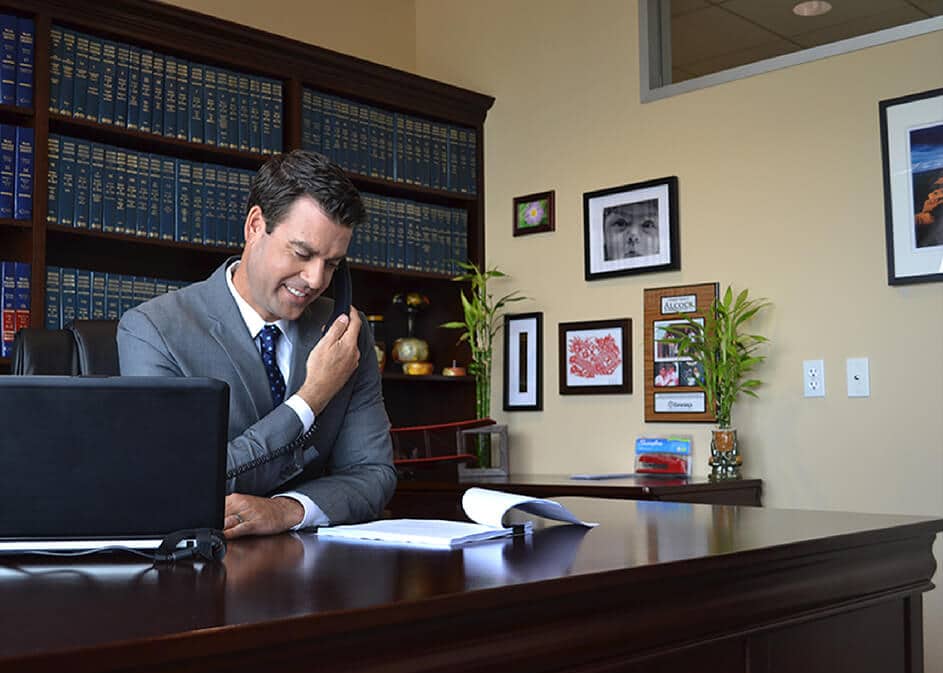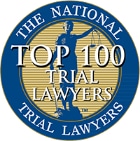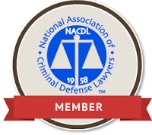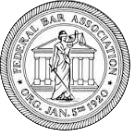Lawyers trade closing arguments in Arizona ‘Sweat Lodge’ case
Camp Verde, AZ – On Day 51 of Arizona v. James Ray, something happened that I have never seen before and presume happens very rarely. Within seconds of taking the bench yesterday morning, Judge Warren Darrow significantly altered one of the jury instructions a full day after they had already been read to the jury. The judge had apparently decided that the use of the word “knowingly” is inappropriate with regard to Ray’s mental state when he allegedly exhibited “criminal negligence” and “reckless” behavior. Darrow indicated that he wanted to rule all incidents of the word be stricken from the jury instructions where they appear in paragraphs concerning Ray’s mental state.
Prosecutor Bill Hughes immediately argued that the State has presented sufficient evidence that Ray “knowingly” caused the sweat lodge deaths.
According to Hughes, “[Ray] was told someone couldn’t breathe and he continued to make the lodge hotter. That is evidence of ‘knowingly’ causing death.”
Defense attorney Tom Kelly questioned how the crime could have been committed “knowingly” when there is no “intent?”
“Besides,” Kelly argued, “a knowing mental state is not an element of the crime.”
Judge Darrow conceded that he has never before done a post correction of jury instructions, and that a “knowingly” standard of mental state should not have been given. In spite of the State’s argument, he then ruled that the word be removed. After a short break to make the revisions in the instructions, the jury was brought in and the amendment was briefly explained and handed out to the jury.
Prosecutor Sheila Polk was now ready to begin the conclusion of her closing arguments. She continued where she left off yesterday by explaining that the defense’s expert medical witness, Dr. Ian Paul, never heard the audio recording of Ray describing to the sweat lodge participants precisely what they were in for, thereby revealing his deliberate intent to put them in a super-heated environment to induce an extreme altered state.
“This is the same mental state,” Polk pointed out, ”that [her witness] Dr. Matthew Dickson described as the hallmark of heat stroke.”
She then played the recording of Ray’s version of what he believes the sweat lodge experience would be like.
In it, you hear Ray tell the participants, “This lodge will provide one of the most intense altered states you have ever had in your life. It will be the most intense heat you have ever experienced in your life. It will feel as though you’re going to die. The true spiritual warrior has conquered death and has no fear of enemies. Death is the biggest fear you face. You must surrender to that fear. It is okay to die.”
Polk then took on the colossal task of trying to summarize the entire four months of testimony. She proceeded to point out the many now familiar events, the growing chaos after the fourth round, Amy Grimes passing out onto Kim Brinkley, Lou Caci falling into the hot rock pit, people being dragged out in front of Ray and he apparently ignoring them, outlining all the opportunities Ray had to stop the ceremony and tend to the participants, but didn’t.
“His desire,” Polk maintained, “for [the participants] to experience something unique took precedence over their lives.”
Polk continued through more of the seemingly countless scenarios that occurred in the sweat lodge that day. She talked of Melissa Philips lying face down near Kirby Brown and noticing Brown’s distress, and Philips crying out five or six times unsuccessfully to alert someone, and how Dawn Gordon and James Shore turned Brown over in an effort to alleviate her labored breathing. Polk reminded the jury how Beverly Bunn held back tears on the witness stand as she described crawling out of the lodge and hearing Brown’s gurgling and a man lying next to her.
The prosecutor then recounted how Ray was the first to exit the sweat lodge at the end of the ceremony and immediately took care of himself by going into the shade and taking a seat while waiting for others to deal with the aftermath. When Debbie Mercer told Ray there were still three people inside the sweat lodge, he did nothing.
“James Ray,” the prosecutor insisted, “intended everything that happened to occur, except death. He intended the near death experience and told everyone that death is a good thing.”
Polk told the jury they must find that Ray’s conduct was a gross deviation that may be characterized as being extreme, outrageous, heinous or grievous.
“By his own words,” Polk said, “[Ray] intended to create something that was extreme.”
In conclusion, Polk explained to the jury that the opportunity to reverse the course existed throughout the event. Instead, Ray chose to continue on in spite of his knowledge of people’s suffering.
“How different it would have been,” Polk suggested, “if James Ray just stopped the event when Sydney Spencer was dragged out.”
The prosecutor entreated the jury, “Ask yourself why he did not and in that answer lays the evidence. This is what he wanted, the extreme altered state. And this is what he sold to participants for $10,000. The evidence proves beyond a reasonable doubt that you must find [Ray] guilty of all three counts of reckless manslaughter.”
Next began defense attorney Luis Li’s closing argument. Right from the start Li cleverly established his argument by taking full advantage of Arizona’s well-known status as a Red State. He began by explaining to the jury that our nation is a nation of laws and those laws are designed to limit the government. The power is given to you, Li continued, not the government. That is what our legal system is about and that is the reason we stand when you walk into the room.
He impressed upon the jury that they must not be moved by prejudice or sympathy, but by truth and the law. From this point onward, the defense attorney continued to appeal to the supposed Republican leanings of the jury by frequently replacing the words “State” or “prosecution” in reference to Sheila Polk and Bill Hughes, with simply “the government.”
Li announced to the jury that “there is something profoundly wrong with this case.” He claimed that the prosecutors again and again suggested that the defense team put them in a position to disprove the possible role of organophosphates in the sweat lodge deaths. By law, it is not the responsibility of the defense to do that. It is the prosecution’s duty to prove all elements of the case.
“Why,” Li asked the jury, “were you instructed on burden of proof, again, this morning? What the State has been doing is wrong and it is a symptom of what is wrong with this case. How far is the government willing to stretch the evidence to suggest that adults can’t choose for themselves, to ignore their bodies and not help someone else out?”
Li then brought up the audio clip of Ray that Polk played at the end of the day Wednesday. In it, Li explains, you hear Ray saying, if you can’t take it, you’ve got to leave and here’s how you do it. You also heard the government say, according to Li, that Ray said you can’t help anyone out. The defense attorney pointed out that Ray, in fact, said in the recording, you can think of me, or you can think of me and others and suggested you be the kind [of person] that helps people out.
“That’s what the tape says,” maintained Li, “stripped of all rhetoric and spin.”
This path in the defense’s closing created an immensely contentious argument after the parties returned from lunch. Before the jury was brought back into the courtroom, tempers flared between Polk, Li and Judge Darrow. Polk vehemently objected to, as she claimed, Li telling the jury that the delays and instructions given them by the court were necessitated by the State conducting the case improperly and furthermore insinuating that the court was leaning in favor of the State by not properly reprimanding them and instead simply conceding to re-instruct the jury.
Li responded by not even trying to repudiate the prosecutor’s claims and made a not so veiled suggestion that the State is truly guilty of perpetrating several incidents of prosecutorial misconduct for which they have not been properly admonished. Instead, Li suggested, special instructions are given to the jury to make up for the failings in the State’s case.
At this point, Judge Darrow could not help getting into the fray by expressing restrained outrage that Li was giving the jury the impression that he was not being impartial. In the end, the judge added yet another special instruction essentially explaining that it is entirely up to the jury to decide if the burden of proof has been properly met, that the judge is impartial in this matter and should not be seen as leaning in favor of one side or the other.
Li’s next most insistent attack in his 3½ hours of arguments was reserved for a comparison of the two medical experts whose testimony has become very crucial in this case, Dr. Matthew Dickson for the State and Dr. Ian Paul for the defense. Li pointed out that sweat lodge participant Stephen Ray’s medical report stated that there was a possible cholinergic response which indicates the likelihood of a toxin.
“This tells you,” claimed Li, “that there is a real possibility that something else was going on.”
Dr. Kennedy, who also treated Stephen Ray, said that she didn’t think Ray had heat stroke. Two doctors said no heat stroke and acknowledged possible poisoning.
“The problem with Dr. Dickson,” Li claimed, “is that he actually didn’t have Stephen Ray’s records when he wrote his report and the State didn’t even ask for those records.”
Dickson testified that he looked at all of the records, Li claimed, but he didn’t realize that he hadn’t.
Li then asked the jury why the State hired Dr. Dickson in the first place. [The State] already had reports from several EMTs, emergency room doctors and, of course, the medical examiners that performed the autopsies. Li suggested to the jury that the State hired Dickson because their own medical examiners would not rule out the possibility of organophosphate poisoning. Li explained to the jury that the State wouldn’t tell you that there’s a reasonable doubt that heat stroke was the cause of death.
Nevertheless, “even Dr. Dickson testified,” according to Li, “that the signs and symptoms [exhibited by the victims and the critically ill] were consistent with both heat illness and organophosphate poisoning.”
Li also wasted no time comparing the credentials of the two doctors and taking a swipe at Polk’s condemnation that Dr. Paul had no credibility. The defense attorney represented to the jury Dickson’s purely “emergency medicine” background, with some experience treating heat-related illness by virtue of his location in Yuma, Arizona. Li held this up to Dr. Paul’s board certification as both an emergency medical doctor and as a forensic pathologist specializing in lung pathology, not to mention his work at some of the most highly acclaimed university hospitals in the world such as Harvard, Brown and McGill.
“Paul actually reviewed all the records,” Li maintained. “He didn’t look anything up in Wikipedia,” as it was revealed Dickson had done.
After having earlier pointed out that the State not only didn’t look at all the evidence and overlooked alternate causes of death, but they allowed crucial evidence that could have proved those possibilities to be lost, improperly preserved or destroyed.
“We had a real clue that something else was going on,” Li added, “and the State wants you to ignore it. On that alone you should find that the State has failed to prove beyond a reasonable doubt an intervening cause of death.”
Before Li had to conclude for the end of the day, he explained to the jury that they have to believe beyond a reasonable doubt Dr. Paul’s conclusion that there was no heat stroke and the possibility of a toxin.
“Given everything you’ve seen and heard”, the defense attorney implored the jury, “if you find there’s a reasonable possibility that James Ray did not cause these deaths, you must acquit him. That’s the law.”
Li has asked for two more hours to finish his closing arguments and there will almost certainly be a rebuttal by the State. Therefore, the jury may possibly get this case this afternoon.

REPRESENTATION YOU DESERVE
Here at Alcock and Associates our team and staff are dedicated to helping and representing YOU. The first step is to understand your case. We will take the time to get to know you and your legal situation so that we are best able to answer all of your questions. After your initial consultation with our attorneys, you will know what you are facing and what can happen to your case.
EVERY CONSULTATION IS COMPLETELY FREE AND COMPLETELY CONFIDENTIAL.
Top Rated Phoenix Attorneys






